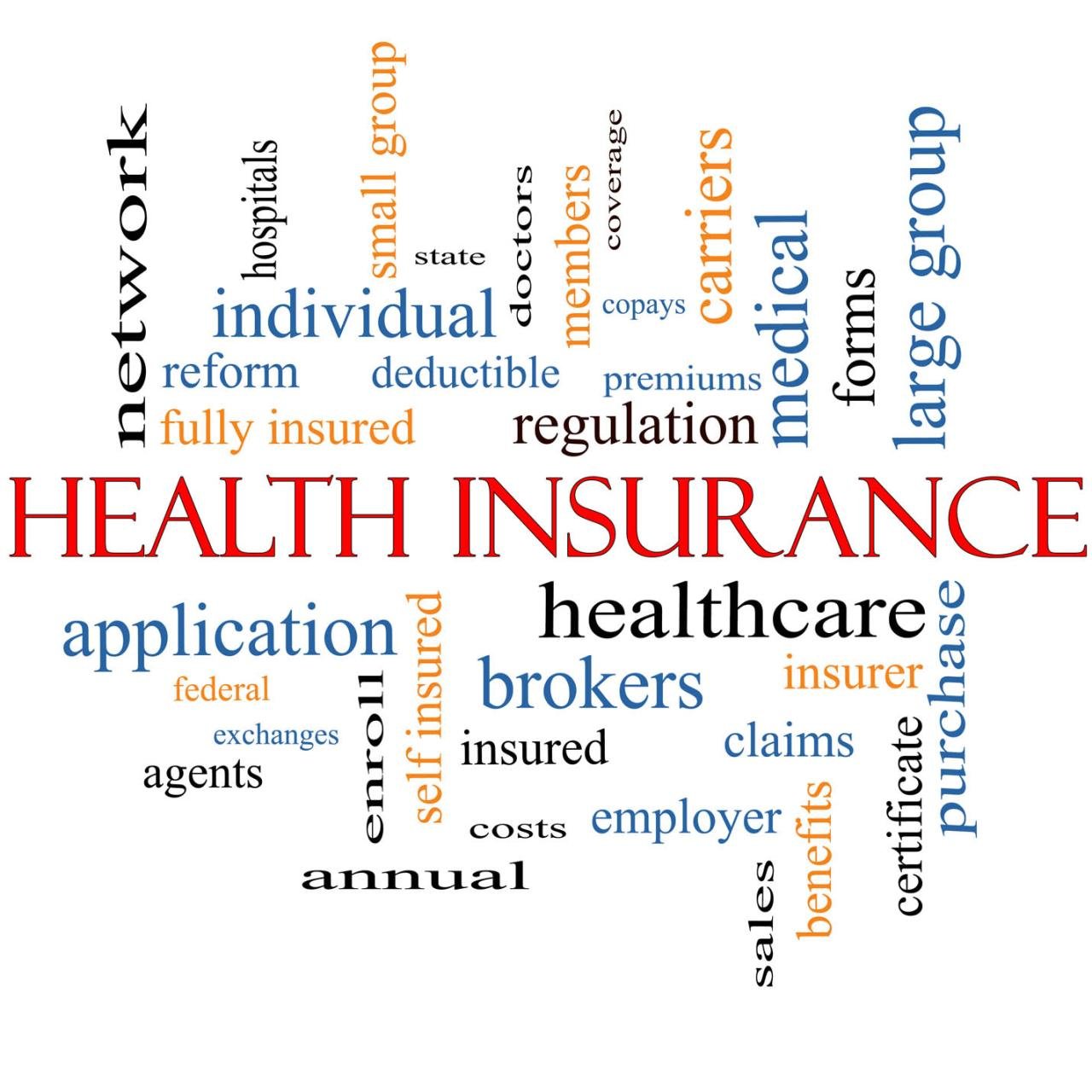Minnesota home health business insurance is a critical aspect of operating a successful home health agency in the state. The industry faces unique challenges, from navigating complex regulations to managing the inherent risks associated with providing care in a home setting. Understanding the various types of insurance coverage available and how they can protect your business is essential for ensuring financial stability and mitigating potential liabilities.
This guide delves into the intricacies of Minnesota home health business insurance, providing insights into the current state of the industry, the key risks faced by home health businesses, and the essential components of a comprehensive insurance policy. We’ll explore how to find the right insurance provider, manage risk effectively, and adapt to emerging trends in the home health insurance market.
By understanding these factors, home health businesses in Minnesota can build a strong foundation for success and navigate the complexities of the industry with confidence.
Finding the Right Insurance Provider

Securing the right insurance provider is crucial for any home health business in Minnesota. It safeguards your business from financial risks, ensuring stability and peace of mind. Choosing the right provider requires careful consideration of factors like coverage options, pricing structures, and the provider’s reputation.
Reputable Insurance Providers
Several reputable insurance providers specialize in home health business insurance in Minnesota. These providers offer comprehensive coverage options tailored to the specific needs of home health agencies.
- The Hartford: Known for its extensive experience in the healthcare industry, The Hartford offers a wide range of coverage options, including general liability, professional liability, workers’ compensation, and cyber liability insurance. They also provide risk management resources and claims support services.
- CNA: CNA is another leading provider of insurance solutions for home health agencies. They offer customized insurance packages that cater to the unique risks associated with home health care, including coverage for medical malpractice, patient negligence, and property damage.
- Chubb: Chubb is a global insurance provider with a strong reputation for financial stability and customer service. They offer comprehensive home health business insurance solutions, including coverage for general liability, professional liability, workers’ compensation, and directors and officers liability.
Comparing Coverage Options and Pricing Structures
Different insurance providers offer varying coverage options and pricing structures. Carefully comparing these aspects is crucial to finding the most suitable provider for your business.
- Coverage Options: The coverage options offered by each provider should align with the specific risks your home health agency faces. For example, if you provide specialized care services, ensure your policy includes coverage for those specific services.
- Pricing Structures: Insurance premiums are influenced by factors such as the size of your business, the services you offer, and your claims history. Compare quotes from different providers to identify the most competitive rates.
- Deductibles and Co-pays: Understand the deductibles and co-pays associated with each policy. Higher deductibles often result in lower premiums, but you’ll be responsible for paying more out-of-pocket in case of a claim.
Negotiating Favorable Insurance Terms, Minnesota home health business insurance
Negotiating favorable insurance terms can help you secure competitive rates and ensure your policy meets your specific needs.
- Shop Around: Obtain quotes from multiple providers to compare coverage options and pricing structures. This allows you to identify the most favorable terms.
- Bundle Policies: Consider bundling multiple insurance policies, such as general liability, workers’ compensation, and professional liability, with the same provider. This can often result in discounts.
- Demonstrate Risk Management Practices: Highlight your agency’s robust risk management practices, such as employee training programs and safety protocols. This can demonstrate to insurers that you’re committed to minimizing risks, potentially leading to lower premiums.
- Review Your Policy Regularly: Regularly review your policy to ensure it continues to meet your evolving needs and that you’re not paying for unnecessary coverage.
Managing Risk and Minimizing Claims

In the dynamic world of home health, minimizing risks and reducing insurance claims is paramount. Proactive risk management not only safeguards your business but also fosters a culture of safety and quality care. By implementing comprehensive strategies, home health agencies can effectively mitigate potential liabilities and protect their financial stability.
Implementing Safety Protocols
Establishing robust safety protocols is fundamental to preventing accidents and minimizing claims. These protocols should encompass all aspects of patient care, from initial assessments to ongoing monitoring and discharge planning.
- Thorough Patient Assessments: Conducting comprehensive assessments to identify potential risks and vulnerabilities is crucial. This includes evaluating physical limitations, cognitive abilities, and environmental factors.
- Proper Training and Education: Equipping staff with the necessary skills and knowledge to provide safe and effective care is essential. This includes training on infection control, medication administration, fall prevention, and emergency response procedures.
- Regular Equipment Inspections and Maintenance: Ensuring that all medical equipment is in proper working order is critical. Regular inspections and maintenance schedules should be established to identify and address any potential hazards.
- Incident Reporting and Analysis: Implementing a standardized system for reporting and investigating incidents is essential. This allows for the identification of patterns and trends, enabling proactive measures to prevent future occurrences.
Ensuring Compliance with Regulations
Navigating the complex web of regulations governing home health is essential for minimizing risk and avoiding potential claims.
- Staying Up-to-Date on Regulatory Changes: The healthcare landscape is constantly evolving, so staying informed about the latest regulations is crucial. This can be achieved through professional development, subscribing to industry publications, and attending relevant conferences.
- Maintaining Accurate Documentation: Detailed and accurate documentation is critical for demonstrating compliance and protecting your agency in the event of a claim.
- Regular Audits and Reviews: Conducting internal audits and reviews ensures that policies and procedures are being implemented effectively and in compliance with regulatory standards.
Fostering a Culture of Risk Awareness
Creating a culture of risk awareness within your organization is essential for promoting safety and minimizing claims.
- Open Communication and Feedback: Encourage open communication and feedback from staff, patients, and families. This allows for the identification of potential risks and the development of solutions.
- Employee Empowerment: Empower employees to report any concerns or potential safety hazards. This fosters a sense of ownership and accountability for safety.
- Regular Safety Training and Education: Conduct regular safety training and education sessions for all staff, covering topics such as fall prevention, medication safety, and infection control.
Reducing Insurance Premiums
By implementing a comprehensive risk management program, home health agencies can reduce their insurance premiums and enhance their financial stability.
- Maintain a Clean Claims History: A strong track record of minimal claims demonstrates a commitment to safety and quality care.
- Implement a Risk Management Program: Developing and implementing a comprehensive risk management program demonstrates a proactive approach to safety and can lead to premium discounts.
- Participate in Safety Initiatives: Participating in industry-specific safety initiatives and programs can showcase your commitment to safety and potentially qualify you for premium reductions.
- Explore Group Insurance Options: Consider exploring group insurance options with other home health agencies to potentially negotiate lower premiums.
Array
The Minnesota home health insurance market is constantly evolving, driven by technological advancements, changing demographics, and a growing focus on value-based care. Understanding these trends is crucial for home health businesses to adapt and thrive in the long term.
Impact of Telehealth on Home Health Insurance
The increasing adoption of telehealth services is transforming the home health landscape. Telehealth allows patients to receive remote care, reducing the need for in-person visits and improving access to services, especially in rural areas. This trend has significant implications for home health insurance:
- Increased Demand for Virtual Care Services: Home health businesses will need to offer telehealth services to meet the growing demand from patients and insurance providers. This includes investing in technology and training staff to provide virtual care effectively.
- New Insurance Coverage Models: Insurance providers are developing new coverage models that incorporate telehealth into home health services. This could include bundled payments for virtual care or coverage for specific telehealth modalities, such as remote patient monitoring.
- Data Security and Privacy Concerns: The use of telehealth raises concerns about data security and patient privacy. Home health businesses must implement robust security measures to protect sensitive patient information, complying with HIPAA regulations and other relevant laws.
The Role of Data Security in Home Health Insurance
Data security is becoming increasingly critical for home health businesses. With the growing reliance on technology and the collection of sensitive patient data, home health providers must prioritize data security to protect their patients and their businesses.
- Cybersecurity Threats: Home health businesses are vulnerable to cyberattacks, which can compromise patient data and disrupt operations. Investing in robust cybersecurity measures, such as firewalls, intrusion detection systems, and employee training, is essential.
- Data Privacy Regulations: Compliance with data privacy regulations, such as HIPAA, is mandatory. Home health businesses must ensure they have policies and procedures in place to protect patient data and comply with all applicable laws.
- Data-Driven Care: Data analytics is playing an increasingly important role in home health care. By leveraging data, home health businesses can identify trends, improve care quality, and optimize resource allocation. However, data security must be a top priority to ensure the responsible use of patient information.
In conclusion, navigating the world of Minnesota home health business insurance requires a proactive approach to risk management and a thorough understanding of the available coverage options. By investing in the right insurance policies and implementing sound risk mitigation strategies, home health businesses can protect their financial well-being, maintain their reputation, and continue providing high-quality care to patients in their homes.
This guide serves as a valuable resource for navigating the complexities of the Minnesota home health insurance landscape and empowering businesses to make informed decisions that safeguard their future.
Popular Questions: Minnesota Home Health Business Insurance
What are the main types of insurance required for home health businesses in Minnesota?
The primary types of insurance typically required for home health businesses in Minnesota include general liability, professional liability (malpractice), workers’ compensation, and property insurance. Each type of insurance provides specific protection against different risks, ensuring comprehensive coverage for the business.
How can I find a reputable insurance provider for my home health business in Minnesota?
Start by researching insurance providers specializing in home health business insurance. Look for providers with a strong reputation, experience in the industry, and competitive pricing. You can also seek recommendations from other home health businesses or industry associations.
What are some practical strategies for managing risk and minimizing insurance claims in my home health business?
Implement robust safety protocols, ensure compliance with all applicable regulations, provide thorough training to employees, maintain detailed records, and foster a culture of risk awareness among staff. These steps can significantly reduce the likelihood of incidents and minimize potential insurance claims.